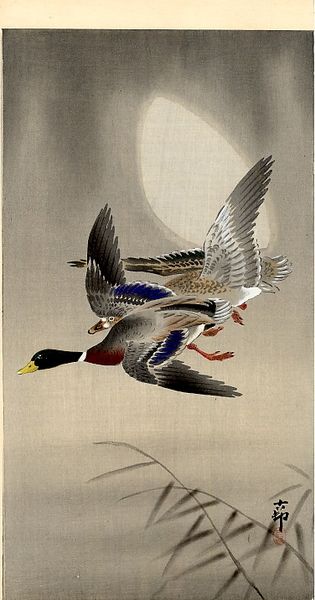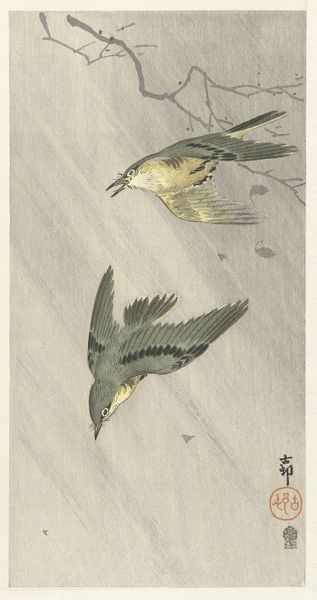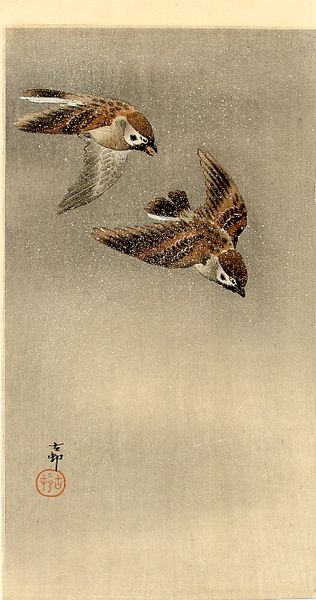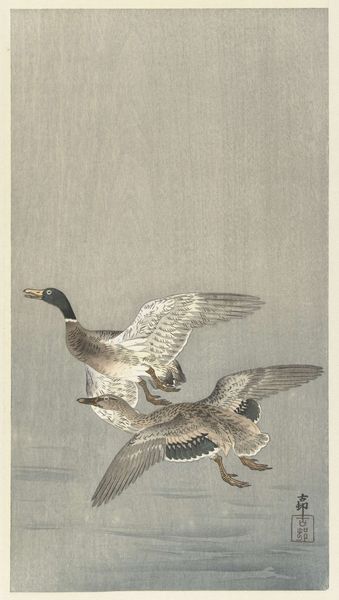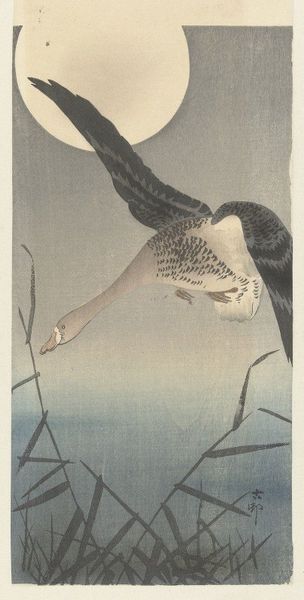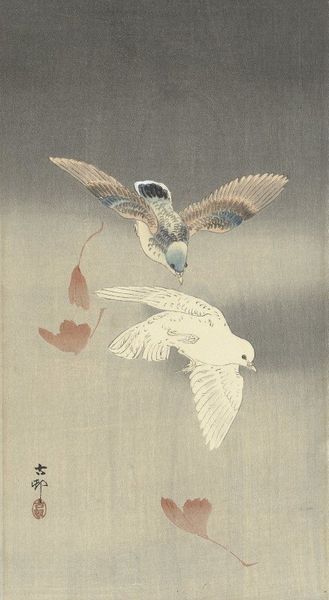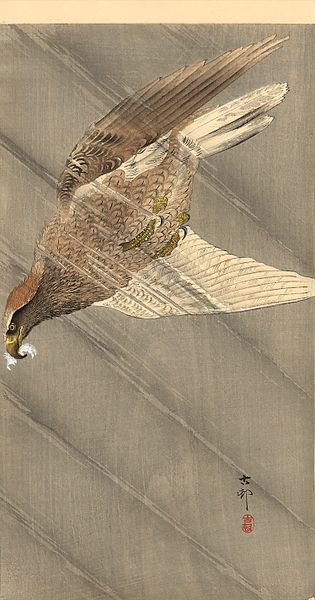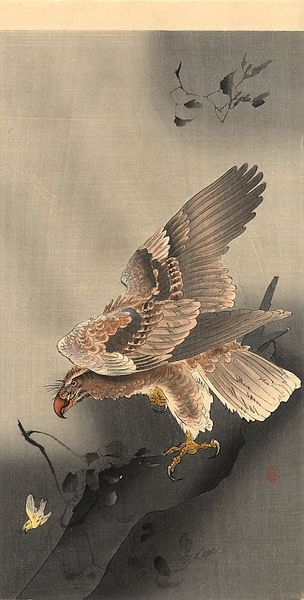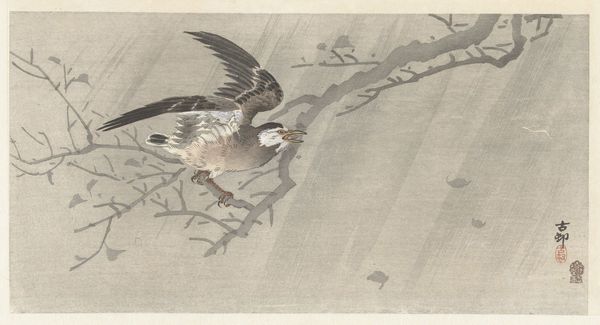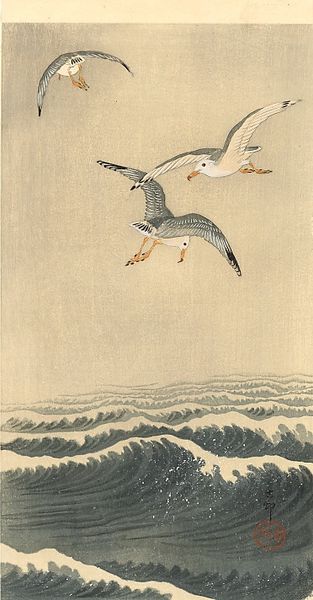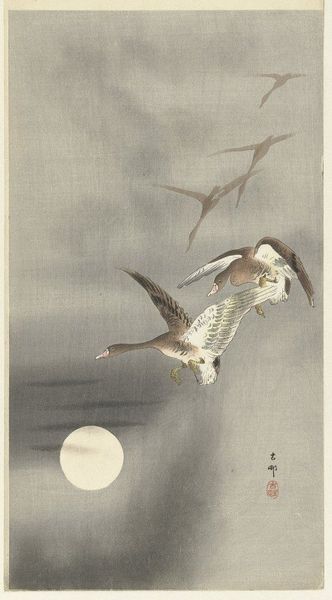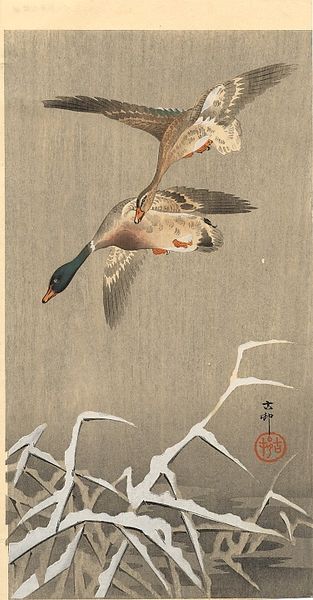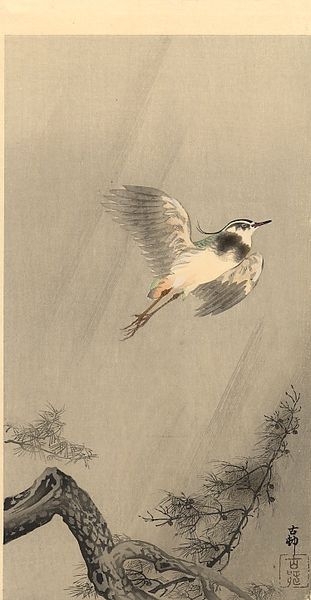
Copyright: Public Domain: Artvee
Curator: I’m immediately struck by the stark drama captured in this piece. The violence of these two birds locked in combat feels so visceral, and yet, rendered with such delicate lines. Editor: That’s interesting. Shall we offer some context? This artwork, entitled "Two Fighting Birds," is by Ohara Koson and dates from between 1900 and 1936. It's a watercolor and ink painting very much in the tradition of ukiyo-e prints. Curator: Absolutely. The ukiyo-e tradition is critical here, and not just aesthetically. These kinds of images weren’t simply decorative, were they? Consider their socio-political resonance, the bird itself, as a symbol of freedom perhaps? Does this brawl serve as an analogy for broader human struggles for power and status, played out on a smaller, more consumable scale? Editor: I see what you mean. While the symbolic interpretation is valuable, let's also consider the artist’s hand, the very materials. Koson clearly possessed immense skill in brushwork to render the feathers with such detail using just watercolor and ink. Note too how economical the composition is – a few well-placed strokes conjure up intense movement and aggression. The paper, the ink, the very tools used in its creation lend a weight and credibility, giving us something real beyond the purely representational. The method elevates the subject. Curator: Yes, the artistic choices speak volumes. Think about what’s not shown, the empty background… it heightens the sense of conflict, isolating these birds within their struggle. And this is where it begins to bleed into a wider narrative – how often are marginalized groups, or even entire nations, portrayed in conflict, stripped bare of context and support? This painting functions as both a visual and social metaphor. Editor: Agreed, there's undeniable artistic intent, but perhaps not limited to one interpretation alone. The deliberate choice of materials to highlight an important social statement: the economic and material accessibility of printmaking and ink practices at that moment in history… It made this type of visual storytelling available to all. Curator: It's the dual nature of this piece that I appreciate – its ability to draw us in through visual storytelling, while simultaneously demanding we question the power dynamics represented, or, more broadly, social and cultural narratives concerning similar situations, even in our time. Editor: Absolutely. I leave considering what stories were crafted not just by Ohara, but the myriad possibilities of visual storytelling via these tools and processes throughout time.
Comments
No comments
Be the first to comment and join the conversation on the ultimate creative platform.
